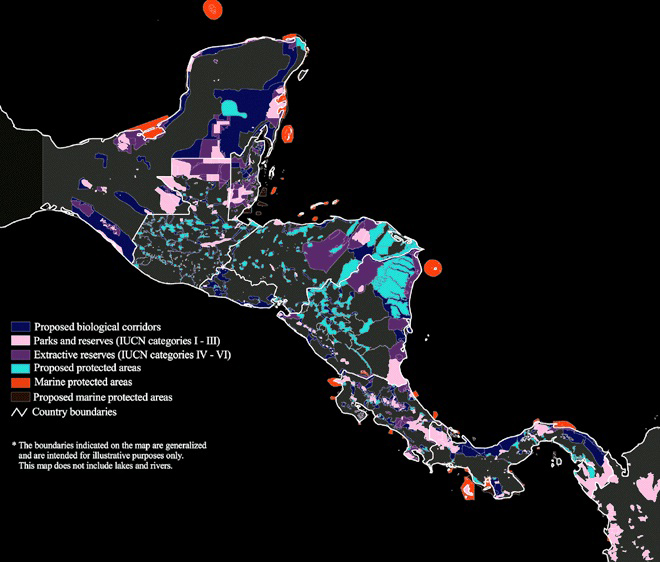In this short observation we see a rare sequence of footage recorded by the researchers working for the conservation program Jaguar Corridor Initiative. These particular observations were captured in Belize but the conservation program covers much of the jaguar range in 14 states including Argentina, Belize, Bolivia, Brazil, Colombia, Costa Rica, Guatemala, Guyana, Honduras, Mexico, Nicaragua, Panama, and Venezuela.
Jaguar is an elusive top predator of the neotropical forests. Observations of reproductive females and offspring numbers are very valuable in estimating the population demographics and viability analysis of this near threatened big cat.
Here in this recording we observe a female with her cubs repeatedly triggering five cameras set along the movement path on July 20th 2016. According to camera trap time codes first encounter happened early in the morning @6:48am (camera 38) and 6:59am (camera 57). Next set of activities took place during daytime midday @12:08pm (two cameras snap within the same minute capturing the transit from two angles: Camera 34 and Camera 55). The group then moves onto the range of the last camera a minute later @12:09pm (camera 56).
One curious point is that the mom appears to be carrying two bot flies on her side (see the two lumps on her side at the very beginning of the recording). These are parasitic flies that infest mammals (including Humans) in the tropics.
Connectedness of habitats is extremely important for the long-term survival of top predators who naturally need very large territories for hunting.
In the late 1980s a vision was born by conservation biologists to develop land use planning systems that would link critical habitats in Southern Mexico and Central America to ensure species survival. In 1997 the vision was endorsed as the Mesoamerican Biological Corridor (MBC) through a Joint Declaration at the 19th Summit of the Central American Heads of State in Panama. This ambitious project also motivated land owners to allow forests to regenerate naturally and thus increase connectivity among forest habitats. Today there are more such regrowing second-growth forests than old-growth forest in countries like Costa Rica. The Mesoamerican Biological Corridor aims to interconnect eight countries beginning from southern states of Mexico in the north to Belize, Guatemala, El Salvador, Honduras, Nicaragua, Costa Rica and Panama in the south.
The Jaguar has the strongest bite in the cat family. Muscles powering it’s jaws are strong enough to crack the shells of freshwater and sea turtles. It has a sweet tooth especially for turtles that got trapped in ponds when drought hits certain areas. Moreover, it is a fabulous swimmer an adaptation much needed to survive in frequently inundated tropical forests. It is an ambush predator. The following observation recorded by Kedar Hippalgaonkar in central Brazil demonstrates one of the most impressive hunting amphibious method the Jaguar employs to stalk and catch a Caiman crocodile. It became an instant hit when the National Geographic released a narrated and image stabilized rendering of the footage:




1 Comment